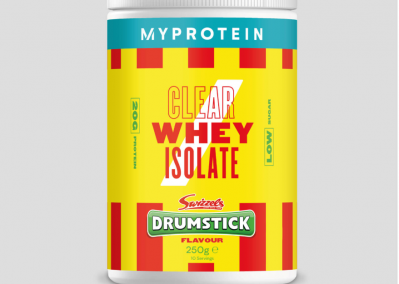A lighter touch: the future of sugar reduction?

Measured in terms of Government targets, the UK food industry – with the exception of a few categories – is failing in its attempt at voluntary reformulation.
In its most recent report, Sugar reduction: progress between 2015 and 2018, Public Health England (PHE) found that, since 2015, manufacturers and retailers had managed an overall sugar reduction of 2.9% by August/September 2018. This is against a five-year target of 20% by 2020.
Of course, since this data was collated, reformulation efforts have continued, as Kate Halliwell, head of UK diet and health policy at the Food and Drink Federation (FDF), points out. “This is an ongoing process and since this data was collected in August 2018, FDF member companies have launched many new lower-sugar recipes to great acclaim,” she says.
Plus, some categories have made major strides in relation to the targets – notably yogurts/fromage frais and breakfast cereals, which reduced sugar by 10.6% and 8.5% respectively during the period covered by the report.
Nevertheless, by and large, food manufacturers haven’t been able to come close to what the FDF describes as “hugely aspirational targets … that could never be met across all categories in the ambitious timeframe given”.
“We have always said the reductions PHE was seeking were not feasible across all the categories in the timeframe. Sugar reduction has considerable technical challenges, which will differ depending on the food. Consequently, we predicted that progress would be variable across categories, which is what we are now seeing,” says Halliwell.
One category that has seen only negligible reductions is confectionery, for which Andy Baxendale, aka the ‘Sweet Consultant’, claims the technical solutions simply don’t exist.
“The targets set by the Government are unachievable. There is nothing to replace the functionality sugar delivers in terms of sweetness and bulking. With artificial sweeteners, you lose the bulk, which you can restore with polyols or soluble fibres, but eat more than 30g a day and there is a laxative effect,” he says.
Cost a limiting factor
In many categories, though, cost is the main limiting factor, according to Robert Lambert, head of marketing and communications at Ulrick & Short. “Cost is clearly the largest single prohibitive factor in improving nutritional value and reducing sugar,” he says.
“The technology to achieve 20%+ sugar reduction exists within the Ulrick & Short range. Using a wide range of crop bases, combined with our clean-label technologies, we can often achieve equivalent or better end-products while meeting sugar reduction targets.”
For example, Ulrick & Short has just developed a new clean-label ingredient, Avanté B, which it claims can reduce up to 20% of sugar in biscuits, mimicking the texture, volume and bite that sugar provides. It is designed to replace the functionality of sugar in biscuits with a very short, brittle texture, such as digestives and shortbreads.
Bahar Yalcindag, director of technology for Europe, the Middle East and Africa at Tate & Lyle, agrees the technical solutions do exist. Her firm produces a variety of sweeteners, soluble fibres and texturants that can enable manufacturers to make their products ‘healthier’, without compromising on taste. “But these changes can take time, effort and resources on the part of manufacturers, and sometimes involve labelling/packaging changes,” she notes.
So, does this failure to hit the target mean that taxation is now inevitable? Or will the Government be prepared to move the goalposts?
Public health nutritionist Roberta Alessandrini believes taxation would be the “next obvious step”, as companies have been given “plenty of opportunity” to reduce sugar and calories in their products.
“The Government is spending public money to monitor and implement a voluntary programme that has shown limited success and will fail to achieve its 20% sugar reduction target by 2020. Yet, the Soft Drinks Industry Levy (SDIL) is proving hugely successful,” says Alessandrini.
Mean reduction in sugar content
As evidence of this, she cites a study produced together with colleagues from Queen Mary University of London, which shows that, since its announcement in 2016, the levy has resulted in a 42% mean reduction in the sugar content of sugar-sweetened beverages.
Helena Gibson-Moore, nutrition scientist at the British Nutrition Foundation, agrees the levy has had a big impact on the reformulation of drinks to reduce sugar, but says it’s unclear whether consumer purchasing has changed significantly as a result.
And Josie Appleton, freedom campaigner and director of the Manifesto Club, warns that a “paternalistic approach” to keeping consumers away from sugar can result in a backlash.
“Some companies reformulated to get around the SDIL and were unsuccessful, generating a negative reaction on social media and in the press. Consumers were campaigning to get full-sugar Ribena back, for example. If you introduce a measure that distorts a market and doesn’t reflect people’s tastes, you end up with perverse effects – and people not wanting to buy products is one of those,” she says.
In support of her case for introducing a tax, Alessandrini cites the examples of Hungary and Mexico, where she says evidence shows taxation has been effective in reducing purchases of the taxed products – particularly in low-income groups, which have a higher risk of obesity.
However, while Gibson-Moore admits programmes in Hungary and Mexico “show some reductions in the purchase of the foods that are taxed”, she cautions: “The potential benefits would have to be carefully considered alongside any possible impacts – for example, on people with lower incomes.”
While some lessons can be learned from the SDIL, any thinking that this levy could simply be replicated in the food industry is naive, say experts. “Beverages are consumed in large volumes, so it was a good place to start with reducing the amount of sugar in people’s diets. It is also easier, from a technical perspective, to reduce sugar in beverages than solid foods, though solutions exist for both,” says Tate & Lyle’s Yalcindag.
Challenge of reducing calories and sugar
Even Alessandrini recognises that reducing calories and sugar in food is more challenging, saying: “Manufacturers would have to reduce both sugar and fat and replace their content with non-calorific ingredients, such as dietary fibre, in order to see meaningful reductions in sugar and calorie content.”
To facilitate this approach, she supports Action on Salt and Action on Sugar’s calls for a “tiered calorie density levy”.
“However, it is difficult to say if the new Government – which has spoken openly against ‘sin taxes’ – would be brave enough to implement sugar/calorie taxation,” she adds.
Given the newly re-elected Prime Minister’s opposition to sin taxes and the absence of sugar tax proposals in the Government’s green prevention paper, published last July, any imminent extension of the SDIL to foods seems unlikely.
Indeed, PHE’s focus in the next couple of years is more likely to be on finishing what it has started, with a particular emphasis on the out-of-home sector where the calorie content of single-serve products remains higher than products in the equivalent categories in the in-home sector.
“Work has already begun on the next phase of engagement, with specific parts of the out-of-home sector,” says PHE chief nutritionist Dr Alison Tedstone.
The Government, through the green paper and PHE, is still vaguely wielding food taxation as a “lever” to be considered “if insufficient progress is made”. But given the state of political flux caused by Brexit and the delayed publication of promised calorie-reduction guidelines, it seems that, for now, if the industry continues to chip away at sugar levels, this will suffice to avoid the iron hand of law.
















